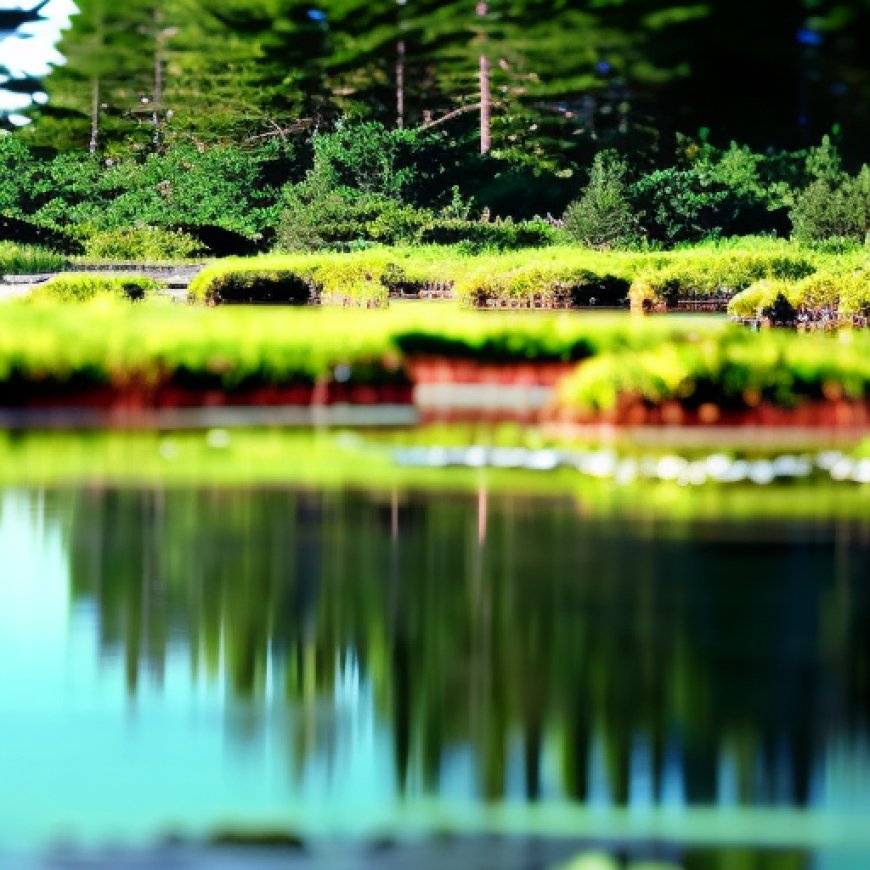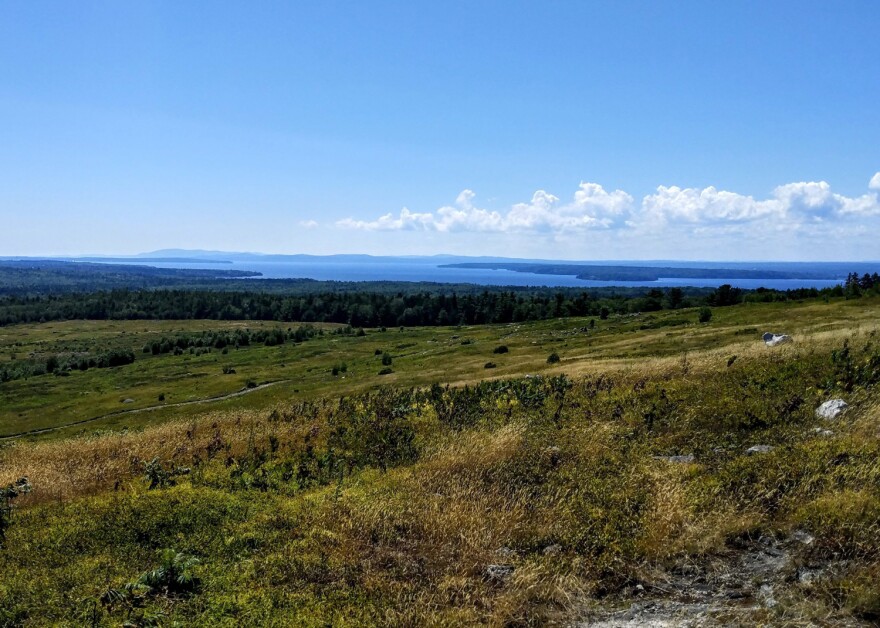Pingree Announces $1.5 Million for Coastal Wetland Conservation, Habitat Restoration in Maine
Pingree Announces $1.5 Million for Coastal Wetland Conservation, Habitat Restoration in Maine Chellie Pingree



Congresswoman Chellie Pingree Announces $1.5 Million in Federal Funding for Coastal Conservation in Maine
Today, Congresswoman Chellie Pingree (D-Maine) announced $1.5 million in federal funding to protect, conserve, and restore more than 2,000 acres of coastal wetlands and habitats in Maine. With this funding, the Blue Hill Heritage Trust will continue to build on their coastal conservation successes and will add to more than 184,000 acres conserved to date within 5 miles of the Gulf of Maine shoreline. Blue Hill Heritage Trust will work to protect and restore a total of 2,107.9 acres, as well as protect or restore habitats that will specifically support Atlantic Coast Joint Venture’s Flagship Species such as Saltmarsh Sparrow and American Black Duck.
Importance of Sustainable Development Goals (SDGs)
- Goal 14: Life Below Water – Protecting coastal wetlands and habitats contributes to the preservation of marine biodiversity and supports sustainable ecosystems.
- Goal 15: Life on Land – Conservation efforts help maintain healthy bird populations and protect endangered species that rely on wetlands for essential habitat.
- Goal 13: Climate Action – Funding for conservation efforts is crucial in mitigating the impacts of the climate crisis, especially along the coast.
Statement from Congresswoman Chellie Pingree
“Countless species rely on the Gulf of Maine’s abundant resources for their survival, including vulnerable bird populations native to the northeastern coast. As we continue to see the worsening impacts of the climate crisis—especially along the coast—it’s more important than ever to fund conservation efforts to protect our wetlands and coastal habitats,” said Pingree. “As a strong supporter of full funding for the North American Wetlands Conservation Fund, I’m thrilled these federal dollars will help further Blue Hill Heritage Trust’s conservation and restoration efforts to ensure Maine land, water, and all that inhabit them are protected now and for generations to come.”
North American Wetlands Conservation Act (NAWCA) Funding
The funding for Blue Hill Heritage Trust is part of an $87 million announcement made by the U.S. Department of the Interior (DOI) and approved by the Migratory Bird Conservation Commission—providing the U.S. Fish and Wildlife Service (FWS) and its partners the ability to help conserve, restore or enhance 315,823 acres of critical wetland and associated upland habitat for migratory birds across North America – including Canada and Mexico.
Impact of NAWCA Funding
- The Commission approved more than $84.3 million in North American Wetlands Conservation Act grants matched by more than $139.8 million in partner funds.
- The acquisitions will expand public opportunities for hunting, fishing, wildlife observation, and outdoor recreational access.
- The funding supports the Biden-Harris administration’s America the Beautiful initiative, focused on conserving and restoring America’s lands and waters through collaborative efforts.
Statement from Secretary Deb Haaland
“The North American Wetlands Conservation Act is one of the most effective tools we have for migratory bird conservation around the country. Funding for wetland and national wildlife refuge conservation projects will be pivotal in maintaining healthy bird populations, uplifting local economies, and improving public access to recreational activities for future generations,” said Secretary Deb Haaland. “The funding announced today further supports the Biden-Harris administration’s America the Beautiful initiative, which is focused on pursuing locally led, collaborative, and inclusive efforts to conserve, connect, and restore America’s lands and waters.”
Importance of Wetlands and NAWCA
Wetlands are crucial ecosystems that provide essential habitat for a significant number of bird species and help buffer communities from storms and sea level rise. The NAWCA funding approved today will benefit 18 Endangered Species Act listed bird species and 77 species listed as Birds of Conservation Concern.
About North American Wetlands Conservation Act (NAWCA)
The North American Wetlands Conservation Act is the only federal grant program dedicated to the conservation of wetland habitats for migratory birds. Since 1991, more than $6.45 billion in funding has advanced the conservation of wetland habitats and their wildlife across more than 32 million acres of habitat in all 50 U.S. states, Canada, and Mexico, while engaging nearly 7,000 partners in more than 3,300 projects. Through NAWCA, federal funds are typically leveraged at twice the legally required dollar-for-dollar non-federal match-to-grant ratio. Program partners include private landowners, state, Tribal and local governments, conservation organizations, sportsmen’s groups, land trusts, and corporations.
Conclusion
Congresswoman Chellie Pingree’s announcement of $1.5 million in federal funding for coastal conservation in Maine highlights the importance of protecting and restoring wetlands and coastal habitats. This funding contributes to the achievement of Sustainable Development Goals, particularly Goal 14: Life Below Water and Goal 15: Life on Land. The North American Wetlands Conservation Act plays a vital role in preserving wetland habitats for migratory birds and endangered species, while also supporting local economies and recreational activities for future generations.
For more information, please visit the official press release.
SDGs, Targets, and Indicators
1. Which SDGs are addressed or connected to the issues highlighted in the article?
- SDG 14: Life Below Water – The article discusses the conservation and restoration of coastal wetlands and habitats, which are important ecosystems for marine life.
- SDG 15: Life on Land – The article mentions the protection and restoration of habitats that support bird species, highlighting the importance of land conservation.
2. What specific targets under those SDGs can be identified based on the article’s content?
- SDG 14.2: By 2020, sustainably manage and protect marine and coastal ecosystems to avoid significant adverse impacts, including by strengthening their resilience, and take action for their restoration in order to achieve healthy and productive oceans – The funding mentioned in the article aims to protect, conserve, and restore coastal wetlands and habitats, contributing to the sustainable management and restoration of marine and coastal ecosystems.
- SDG 15.1: By 2020, ensure the conservation, restoration, and sustainable use of terrestrial and inland freshwater ecosystems and their services, in particular forests, wetlands, mountains, and drylands, in line with obligations under international agreements – The funding supports the protection and restoration of wetlands, which are important terrestrial ecosystems.
3. Are there any indicators mentioned or implied in the article that can be used to measure progress towards the identified targets?
- The article mentions the number of acres (2,107.9 acres) that will be protected and restored by the Blue Hill Heritage Trust, which can be used as an indicator of progress towards the targets.
- The article also mentions the specific bird species, such as the Saltmarsh Sparrow and American Black Duck, whose habitats will be protected or restored. Monitoring the population and habitat conditions of these species can serve as indicators of progress towards the targets.
SDGs, Targets, and Indicators Table
| SDGs | Targets | Indicators |
|---|---|---|
| SDG 14: Life Below Water | Target 14.2: By 2020, sustainably manage and protect marine and coastal ecosystems to avoid significant adverse impacts, including by strengthening their resilience, and take action for their restoration in order to achieve healthy and productive oceans. | – Number of acres protected and restored – Population and habitat conditions of target bird species |
| SDG 15: Life on Land | Target 15.1: By 2020, ensure the conservation, restoration, and sustainable use of terrestrial and inland freshwater ecosystems and their services, in particular forests, wetlands, mountains, and drylands, in line with obligations under international agreements. | – Number of acres protected and restored – Population and habitat conditions of target bird species |
Copyright: Dive into this article, curated with care by SDG Investors Inc. Our advanced AI technology searches through vast amounts of data to spotlight how we are all moving forward with the Sustainable Development Goals. While we own the rights to this content, we invite you to share it to help spread knowledge and spark action on the SDGs.
Fuente: pingree.house.gov

Join us, as fellow seekers of change, on a transformative journey at https://sdgtalks.ai/welcome, where you can become a member and actively contribute to shaping a brighter future.







